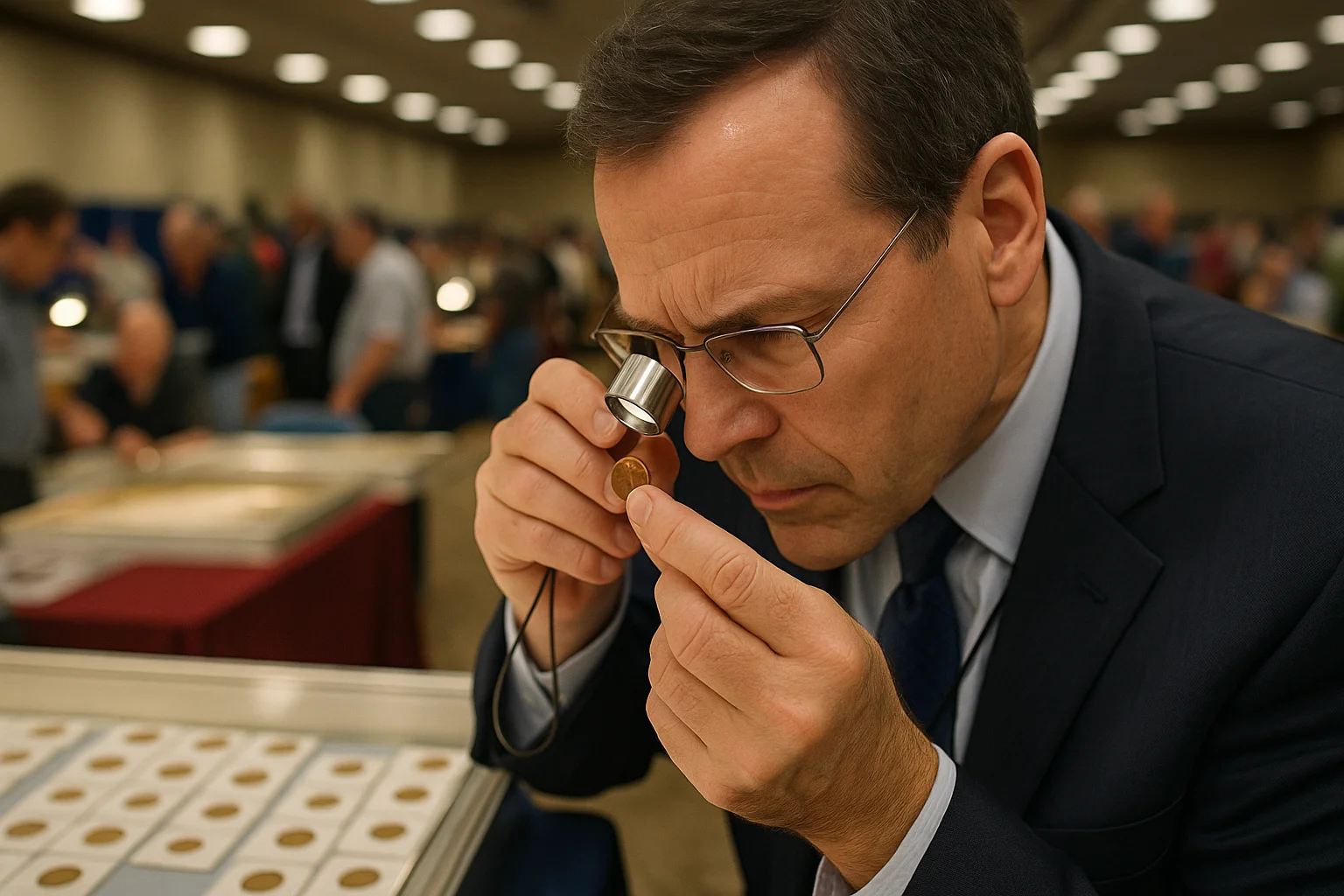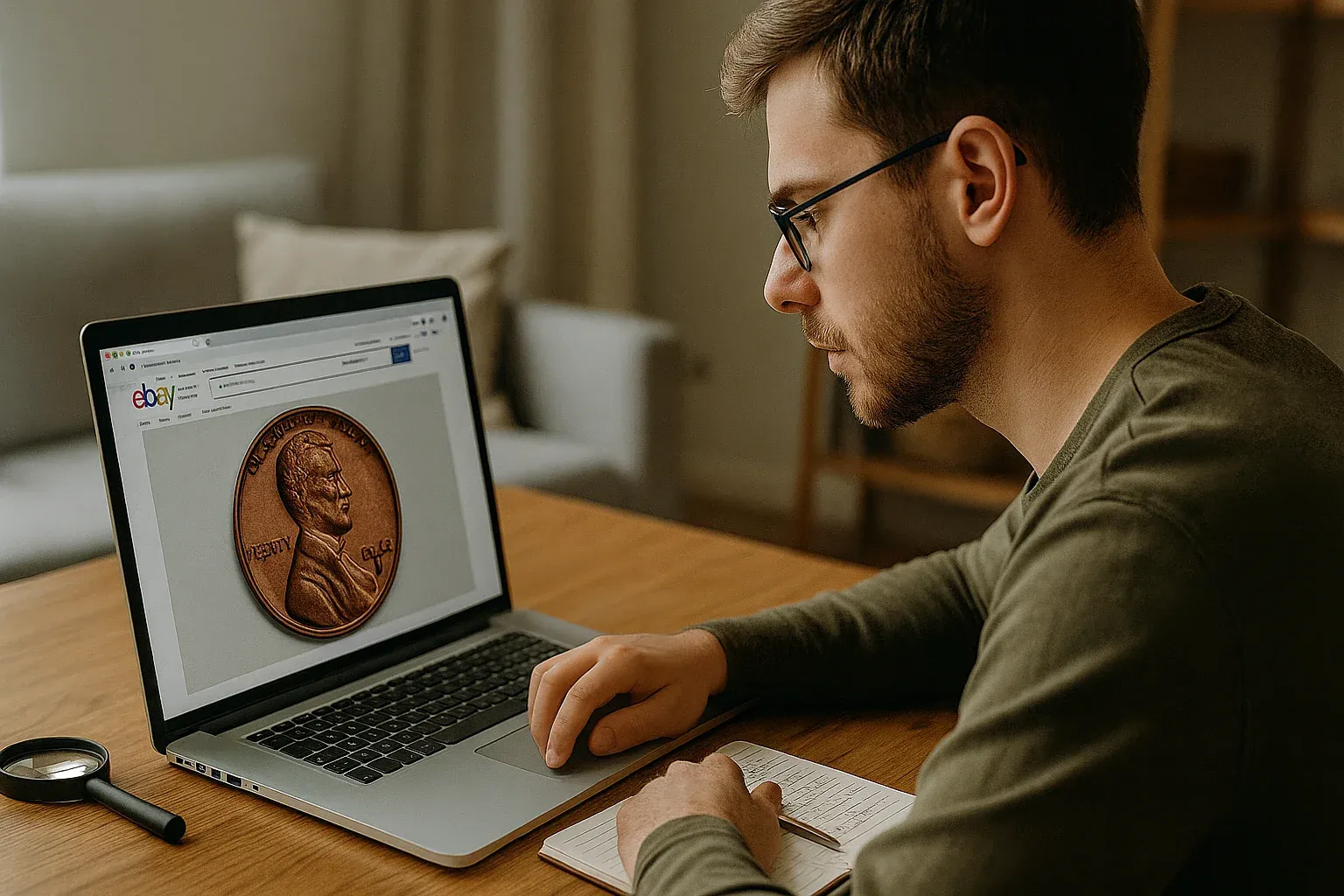.The Lincoln Wheat Penny, minted from 1909 to 1958, is one of the most recognizable coins in American history. While billions were made, a small number are true rarities — coins worth hundreds of thousands or even millions. Finding a rare Lincoln wheat penny isn’t just for experts; with the right knowledge, anyone can do it.
So, right now we will show you exactly where to look: major coin shows with top dealers, high-profile auctions where records are broken, and online platforms where collectors' jewels can appear at any moment. Here you can also see some real examples of Wheat Pennies that shocked the collecting world with their prices — and learn what makes them so valuable.

Why Rare Lincoln Wheat Pennies Are So Valuable
Between 1909 and 1958, the U.S. Mint struck billions of Lincoln Wheat Pennies, but certain factors made a few years and varieties stand out: low mintages, unusual compositions, and striking errors. These factors have transformed ordinary pennies into the most sought-after coins in American numismatics.
Consider these headline sales:
1943-D Bronze Penny — sold for a staggering $1.7 million in 2010. This coin was struck on a bronze planchet during a year when pennies were supposed to be steel.
1943 Bronze Lincoln Cent (San Francisco) — brought $336,000 at a Heritage Auctions sale.
Another 1943-D Bronze Cent — reached $840,000, proving lightning can strike twice in the same variety.
1944 Steel Cent (S mint) — in MS66 grade, realized $408,000 at Heritage in 2021.
1944 Steel Cent examples in high grades have been valued between $75,000 and $1.1 million, depending on condition.
Why such astronomical prices? It comes down to rarity and demand. A wrong metal, a missing mint mark, or a production anomaly can create a coin so unusual that collectors are willing to battle — and pay handsomely — to own it.
Collector’s tip: If you think you’ve found one of these rarities, don’t rush to clean or alter it. Get it authenticated and graded by a trusted service, e.g., PCGS or NGC — the right certification can mean the difference between pocket change and a life-changing windfall.
From Rarity to Reality: Hunting for Wheat Pennies at Coin Shows
Now that you know why certain Lincoln Wheat Pennies can command staggering prices, the next step is figuring out where to actually find them. While luck sometimes plays a role, serious collectors know that one of the most effective ways to hunt for rare coins is by attending major coin shows.
These events offer something you simply can’t get from pictures on a screen — the chance to examine coins in person, talk to experienced dealers, and even spot rare varieties that others may have overlooked.
Why Coin Shows Are Worth Your Time
Coin shows bring together hundreds or even thousands of dealers, collectors, and grading experts under one roof. You can handle coins (with proper gloves, of course), see how they look in different lighting, and ask sellers about provenance and grading history. Many dealers bring their most valuable stock to these events, which means your chances of spotting a rare penny in exceptional condition are higher than at smaller local markets.
Key Events Every Collector Should Know
FUN Show (Florida United Numismatists)
January Show: Held annually in Orlando, this is one of the largest coin conventions in the U.S., with over 1,500 dealers and numerous educational exhibits. In 2025, it’s scheduled for early January and will feature live auctions alongside dealer tables.
Summer FUN: Usually in July (the 2025 show is already confirmed), it’s slightly smaller but still a major event. On-site grading and appraisal services are often available through organizations like CAC Grading, allowing you to have coins authenticated on the spot.
ANA World’s Fair of Money
Organized by the American Numismatic Association, this is the biggest international coin show. In 2025, it will take place in Oklahoma City in August, with future locations rotating each year. Top dealers, grading companies, and auction houses attend, making it a prime location to find high-grade Wheat Pennies — including rare varieties like the 1943 bronze cent or the 1944 steel cent.
How to Prepare and Maximize Your Trip
Check the official schedule: Websites like funtopics.com and money.org list dates, locations, and registration details.
Consider early access tickets: These let you enter before the general public, giving you first pick of the best coins.
Bring the right tools: A jeweler’s loupe, cotton gloves, and small labeled envelopes for coins.
Timing strategy: Go on opening day for the top selection, and on the final day for potential discounts as dealers pack up.
Auctions: Where Big Sales Happen and How to Join
If coin shows are the place to discover treasures in person, auctions are where these jewels often change hands for jaw-dropping prices. Many of the legendary sales in numismatic history — including the $1.7 million 1943-D bronze penny — happened at high-profile auctions. These events bring together serious collectors, investors, and dealers from around the world.
Major Auction Houses to Watch
Here are a few of the most trusted names in the business, along with what they’re known for:
Auction House | Specialties | How Often They Run Major Coin Sales | Example of a Rare Lincoln Wheat Penny Sale |
Heritage Auctions | U.S. coins, rare cents, error coins | Several times a year, both live and online | 1944-S steel cent in MS66 sold for $408,000 (2021) |
Stack’s Bowers Galleries | Historical U.S. coins, world coins | Multiple times annually, often alongside coin shows | 1943 bronze Lincoln cent sold for $336,000 |
GreatCollections | Online-only U.S. and world coins | Weekly online auctions | 1955 doubled-die cent in MS65 sold for over $50,000 |
How to Participate Successfully
Register уarly – Some auctions require account approval or a refundable deposit before you can bid.
Set a firm budget – Decide your maximum bid before the auction starts, and stick to it.
Study past results – Check the auction house’s archives to see how similar coins have sold. This helps you avoid overpaying.
Preview lots in person or virtually – Many auction houses allow physical viewing or offer high-resolution online galleries before the sale.
Know the fees – Buyer’s premiums can add 10–20% to the hammer price.
Being informed before raising your paddle — or clicking “bid” — is the difference between a smart investment and a costly impulse.
Online Marketplaces and Collector Communities: A New Frontier
Not every rare Lincoln Wheat Penny is sold in the spotlight of a live auction. Today, a huge number of trades happen quietly online — sometimes in the open on big platforms, other times within tight-knit collector communities. This shift has made collecting more accessible than ever, but it is also introduced new risks for buyers.
If you’re going digital with your search, focus on three main hubs where deals and discoveries most often happen:
eBay – The largest marketplace with thousands of listings at any given time, but it demands careful vetting to avoid overpriced or misrepresented coins.
Specialized online auctions – Sites like GreatCollections host regular sales where coins are typically authenticated, offering more confidence than general marketplaces.
Collector forums – Groups such as CoinTalk and Collectors Universe connect you directly with experienced numismatists, giving you access to advice, peer reviews, and occasional private sales.
Once you’ve found a potential treasure, it’s all about verifying before you buy. Study the seller’s history for consistently positive feedback, and request clear, close-up photos that show the date, mint mark, and even the coin’s edge. Whenever possible, ask for certification from trusted third-party graders like PCGS, NGC, or ANACS — this extra documentation can mean the difference between a great find and an expensive mistake.
Tip: Before sealing the deal, run the coin through the Coin ID Scanner app. In seconds, you can confirm its type, spot key features, and get a quick rarity estimate.

How to Protect and Preserve Your Rare Lincoln Wheat Penny
After you find a rare Lincoln Wheat Penny, knowing how to evaluate, certify, and store it properly is key to keeping its value intact.
Evaluating Condition, Rarity, and Demand
The first step in assessing any coin is its condition. Collectors look closely at wear, scratches, and overall eye appeal. Coins with crisp details and minimal damage naturally command higher prices. But condition isn’t everything — the coin’s rarity and current market demand also matter. Some dates and mint marks had smaller production numbers or unusual errors, making them much more sought-after.
Certification: Why It Matters
For high-value coins, professional grading and certification are essential. Trusted services like PCGS and NGC authenticate your coin and assign an official grade based on its condition. This third-party verification not only boosts buyer confidence but also helps ensure you get top dollar when selling or trading.
Proper Storage to Preserve Value
Protecting your coin from damage over time is just as important as verifying its authenticity. Consider these storage tips:
Store coins in airtight plastic capsules or acid-free albums to prevent scratches and exposure to air.
Keep coins in a stable environment with controlled temperature and humidity to avoid corrosion or discoloration.
Handle coins only with cotton gloves or by their edges to prevent oils and dirt from damaging the surface.
A Crucial Warning: Never Clean Your Coins
It may be tempting to polish or clean a coin that looks dirty or tarnished, but resist the urge. Even light cleaning can permanently damage the coin’s surface, stripping away its natural patina and dramatically reducing its value. Professionals agree: the best coin is the one in its original state.
The Final Word
Collecting rare Lincoln Wheat Pennies comes down to knowing where to look, how to verify what you find, and how to protect it. With the right attitude, every collector can turn even a small discovery into a smart investment and a satisfying win.
